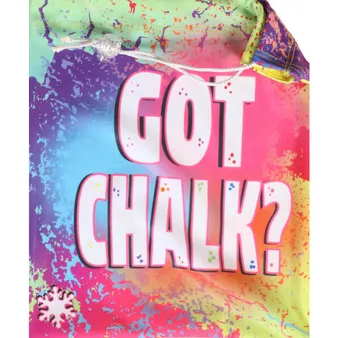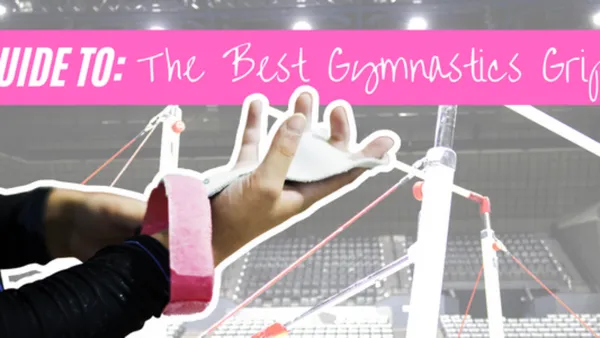Table of Contents
Gymnastics is a physically demanding sport that requires strength, coordination, and agility. Gymnasts often use grips and chalk to improve their performance and reduce the risk of injury. In this comprehensive guide, we will delve into the world of gymnastics grips and chalk, exploring different types, materials, and factors to consider when choosing the best options for your needs. We will also provide tips on caring for your grips and chalk to ensure optimal performance and longevity. Whether you are a beginner gymnast or a seasoned pro, this guide will help you make informed decisions about The best gymnastics grips and chalk for your unique requirements, helping you elevate your performance to new heights.
The Best Gymnastics Grips and Chalk: Elevate Your Performance
I. Types of Gymnastics Grips
Types of Gymnastics Grips
Leather Grips
Leather grips are the most common type of gymnastics grip. They are made from high-quality leather that is both durable and comfortable. Leather grips provide a good grip on the bar, even when sweaty. They are also relatively inexpensive, making them a popular choice for gymnasts of all levels.
- Durable and comfortable
- Good grip on the bar, even when sweaty
- Relatively inexpensive
Synthetic Grips
Synthetic grips are made from a variety of materials, including rubber, plastic, and neoprene. They are often designed to provide a more comfortable grip than leather grips. Synthetic grips can also be more durable than leather grips, making them a good choice for gymnasts who train frequently.
Advantages of Synthetic Grips | Disadvantages of Synthetic Grips |
|---|---|
More comfortable grip | Less durable than leather grips |
More durable than leather grips | More expensive than leather grips |
Grip Accessories
In addition to grips, there are a number of other accessories that gymnasts can use to improve their grip. These accessories include:
- Chalk: Chalk helps to absorb sweat and improve grip. It is a popular choice for gymnasts of all levels.
- Liquid chalk: Liquid chalk is a more portable alternative to traditional chalk. It is applied to the hands using a spray bottle.
- Grip tape: Grip tape is a thin, self-adhesive material that can be applied to the bars to improve grip. It is a popular choice for gymnasts who have sweaty hands.
Do you want to learn more about how to choose the best gymnastics grips and chalk? Visit our website for more information.
II. Choosing the Right Gymnastics Grip
Choosing the Right Gymnastics Grip
Selecting the appropriate gymnastics grip is crucial for enhancing performance and preventing injuries. Consider these factors when choosing the best grip for your needs:
- Grip Type: Choose between leather grips, synthetic grips, and grip accessories based on your personal preference and the desired level of grip.
- Hand Size: Ensure the grip fits your hand size snugly to prevent slipping or discomfort during use.
- Skill Level: Consider your skill level and the demands of your gymnastics routine when selecting a grip that provides the necessary support and control.
- Budget: Gymnastics grips vary in price, so set a budget that aligns with your financial capabilities.
Here are some additional tips for choosing the right gymnastics grip:
- Try before you buy: If possible, try out different grips before making a purchase to ensure they fit properly and feel comfortable in your hands.
- Consider your grip strength: If you have weak grip strength, opt for a grip that provides additional support and cushioning.
- Think about your sweat level: If you tend to sweat a lot, choose a grip that is moisture-wicking and breathable to prevent slipping.
- Inspect the grip regularly: Check your grips for signs of wear and tear, and replace them as needed to maintain optimal performance and safety.
Grip Type | Pros | Cons |
Leather Grips | ||
Synthetic Grips | ||
Grip Accessories |
By following these tips, you can choose the best gymnastics grips that meet your individual needs and help you perform at your best.
Related posts: The Best Gymnastics Equipment for Home Use, How to Improve Your Flexibility and Mobility with Gymnastics, The Most Common Gymnastics Injuries and How to Prevent Them
III. Benefits of Using Gymnastics Chalk
Benefits of Using Gymnastics Chalk
Gymnastics chalk is an essential piece of equipment for any gymnast. It helps to improve grip strength, prevent blisters, and reduce the risk of injury. Using chalk also allows gymnasts to perform more complex and intricate skills with greater ease and precision.
Improved Grip Strength | Prevents Blisters | Reduced Risk of Injury |
Chalk absorbs sweat and moisture, keeping hands dry and tacky. This helps to improve grip strength and prevents the gymnast from slipping. | Chalk creates a barrier between the skin and the equipment, preventing friction and blisters. | Chalk helps to reduce the risk of injury by providing a more secure grip and preventing falls. |
In addition to the benefits listed above, using gymnastics chalk can also help to:
- Increase confidence
- Improve performance
- Make the sport more enjoyable
If you are a gymnast, using chalk is a great way to improve your performance and reduce your risk of injury. Talk to your coach or a qualified professional to learn more about how to use chalk properly.
Here are some additional tips for using gymnastics chalk:
- Apply chalk to your hands before each workout or competition.
- Reapply chalk as needed, especially if your hands start to sweat.
- Do not use too much chalk, as this can make your hands slippery.
- Store chalk in a cool, dry place.
By following these tips, you can get the most out of gymnastics chalk and improve your performance as a gymnast.
Related Posts:
- How to Choose the Right Gymnastics Leotard
- The Most Common Gymnastics Injuries and How to Prevent Them
- The Best Gymnastics Exercises for Core Strength
IV. How to Apply Gymnastics Chalk
How to Apply Gymnastics Chalk
Chalk Application Techniques
- Grip Preparation: Ensure your hands are clean and dry before applying chalk.
- Chalk Quantity: Apply a moderate amount of chalk to your hands, enough to absorb moisture but not too much to make your hands slippery.
- Chalk Coverage: Focus on applying chalk to the areas of your hands that will come into contact with the gymnastics equipment, such as your palms, fingers, and wrists.
- Rubbing the Chalk: Rub the chalk into your hands thoroughly to distribute it evenly and create a smooth layer.
- Reapplication: Reapply chalk as needed, especially after performing exercises that cause your hands to sweat or after wiping your hands.
Read Also: Choosing the Best Gymnastics Grips and Chalk
Benefits of Applying Gymnastics Chalk
- Improved Grip: Chalk helps to absorb moisture from your hands, providing a better grip on the gymnastics equipment, preventing slipping and ensuring control during exercises.
- Reduced Friction: Chalk minimizes friction between your hands and the equipment, allowing for smoother movements and reducing the risk of blisters or abrasions.
- Increased Confidence: Using chalk can give gymnasts a sense of confidence and reassurance, knowing that their grip is secure and they can focus on their performance without worrying about slipping.
Gymnastics Chalk Type | Description |
|---|---|
Block Chalk: | Solid block of chalk that requires crumbling before use. Offers a more controlled application and less mess. |
Loose Chalk: | Fine powder chalk that is applied directly to the hands. Provides quick and easy application but can be messy. |
Liquid Chalk: | Liquid form of chalk that is applied to the hands and dries quickly. Offers a strong and long-lasting hold. |
Read Also: Mastering the Handstand in Gymnastics
Additional Tips for Using Gymnastics Chalk
- Experiment with different types of chalk to find the one that works best for you.
- Store your chalk properly in a dry and airtight container to prevent it from becoming clumpy or losing its effectiveness.
- Avoid applying too much chalk, as this can make your hands slippery and reduce your grip.
- If you have sensitive skin, consider using a hypoallergenic or unscented chalk to avoid irritation.
Read Also: Artistic, Rhythmic, and Acrobatic Gymnastics: Exploring the Differences
V. Conclusion
Choosing the right gymnastics grips and chalk is essential for gymnasts of all levels. By considering factors such as grip type, hand size, skill level, and budget, you can select the best options to enhance your performance and minimize the risk of injury. Proper care and maintenance of your grips and chalk will ensure their longevity and optimal functionality. With the right equipment and knowledge, you can unlock your full potential and soar to new heights in the world of gymnastics. Remember to consult with experienced gymnasts or coaches if you have specific questions or concerns to ensure you make the best choices for your individual needs.